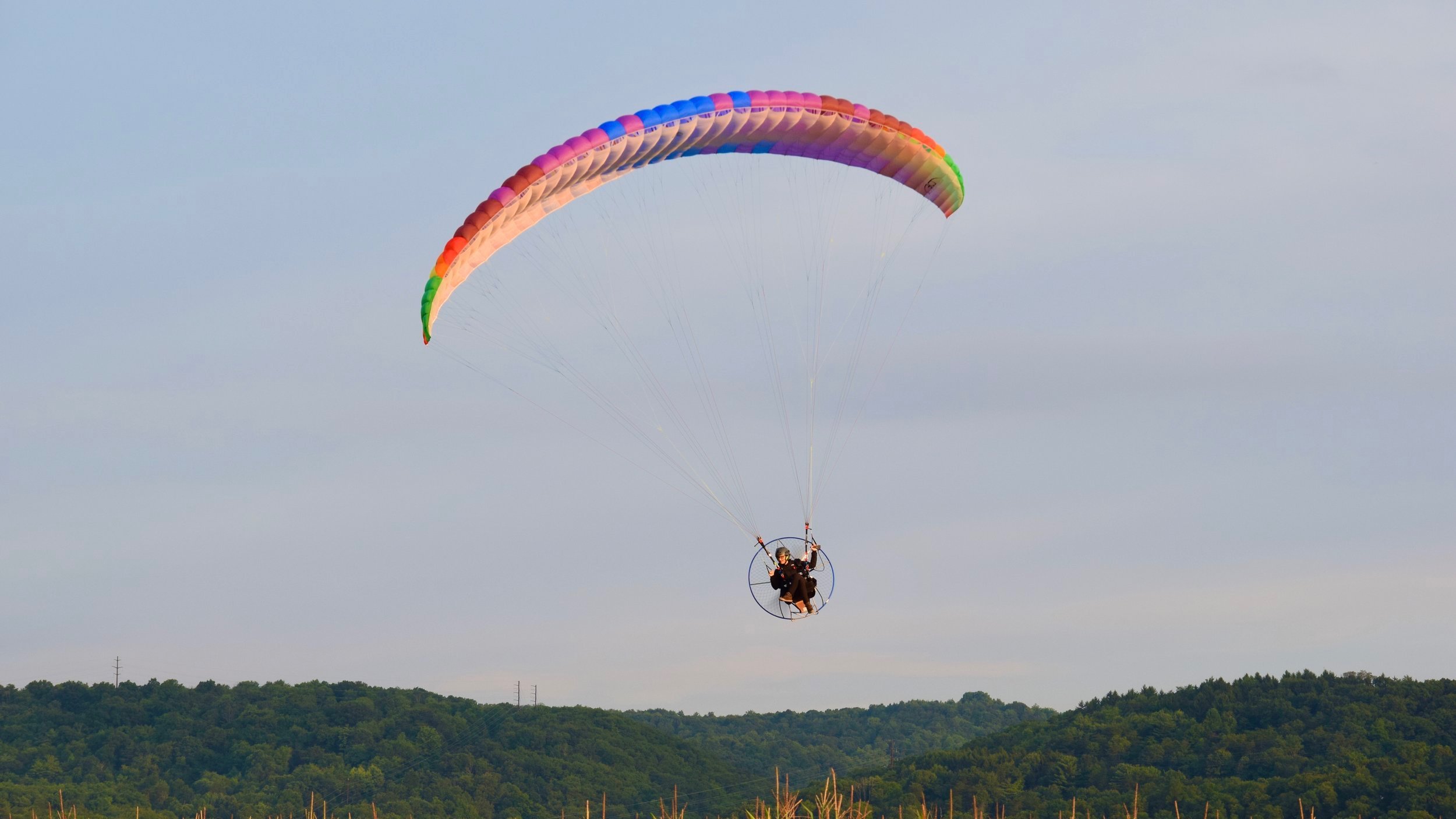
Frequently asked questions.
What is powered paragliding?
Powered paragliding, also known as paramotoring, is an exhilarating form of flight that combines paragliding with a small motor strapped to the pilot's back. The pilot wears a harness and sits in a seat suspended beneath a fabric wing similar to that of a traditional paraglider. The motor, typically a lightweight two-stroke engine, provides thrust to propel the pilot and wing into the air. Powered paragliders can take off from flat ground and climb to varying altitudes, offering the freedom to explore the skies and enjoy breathtaking aerial views. It's a versatile and accessible form of aviation that allows enthusiasts to experience the thrill of flight with relatively minimal equipment.
How high can you fly?
The maximum altitude a paramotor can reach varies depending on factors like weather conditions and airspace regulations. Legally, in the right airspace, paramotor pilots can fly up to 18,000 feet. Above 15,000 feet, oxygen is typically required due to decreased oxygen levels at higher altitudes. However, it's important to note that most paramotor flights occur between 500 and 2,500 feet above ground level. During our tandem flight experiences, we prioritize safety and comfort, typically keeping altitudes within this range unless otherwise arranged and agreed upon before the flight. This ensures an exhilarating yet secure adventure for all our passengers.
What kind of weather conditions do we need?
The right weather conditions for paramotoring typically include light and consistent winds, clear skies with good visibility, and stable atmospheric conditions. Ideal wind speeds for paramotoring generally range from 0 to 12 miles per hour, although this can vary based on many factors. It's also important to avoid flying in turbulent or gusty conditions, as these can make flying more difficult. Additionally, pilots should be mindful of temperature and humidity levels, as extreme weather conditions can impact the performance of both the wing and the motor. Overall, choosing the right weather conditions is crucial for ensuring a safe and enjoyable paramotoring experience.
Why do some paramotors have wheels?
Paramotors with wheels, often referred to as a "trike” or “quad” offer an alternative to foot-launching (where the pilot runs and takes off on foot). These wheeled versions provide several advantages. Firstly, they make it easier for pilots who may have difficulty running or have mobility issues to take off and land. Trike paramotors can also carry more weight, such as larger fuel tanks or additional equipment, without affecting the pilot's ability to take off. Moreover, for tandem flights, using wheeled paramotors is considered the safest way to take passengers, ensuring a stable and comfortable experience from start to finish. Overall, wheeled paramotors offer greater versatility and accessibility for pilots, making them a popular choice for many enthusiasts.
How fast do we fly?
Paramotoring is often perceived as a slow form of flight, and while various factors influence speed, the wing plays the most significant role. Contrary to popular belief, the motor controls ascent or descent, not speed. Speed is primarily dictated by the paraglider. During our tandem flights, we generally maintain ground speeds of around 20-30 mph. When flying into the wind, our ground speed decreases, whereas flying with the wind results in an increase in speed.
How safe is it?
Like any form of aviation, there are inherent risks, but there are many safety measures we take to mitigate these risks.
Safety in paramotoring often begins with thorough training from certified instructors who teach proper techniques. Additionally, regular equipment maintenance and pre-flight checks are essential to ensure that all gear, including the paramotor, wing, harness, and reserve parachute, are in good working condition. At wind shift, our pilot holds a tandem instructor rating through the United States Powered Paragliding Association (USPPA). We ensure both pre-flight and post-flight checks are conducted, along with completing all scheduled maintenance and inspections on time, on both the motor and glider.
Weather conditions play a significant role in safety, with pilots typically avoiding flying in strong winds, turbulent air, or adverse weather. Pilots should also be aware of airspace regulations and restrictions to avoid potential conflicts with other aircraft.
Overall, with proper preparation and caution, paramotoring can be a rewarding and safe way to experience the thrill of flight.
What equipment do we use?
At Windshift, we take to the skies with the Fly Products Xenit trike powered by the Vittorazi Cosmos 300 engine, paired with the Bruce Goldsmith Design Cyclone tandem paraglider. The Xenit trike is fitted with large wheels, to ensure smooth takeoffs and landings across various terrains, ensuring a safe and comfortable experience for both pilot and passenger. The Vittorazi Cosmos 300 engine provides smooth power, enabling efficient and effortless flights with a tandem load. Complementing this setup is the Cyclone tandem paraglider from Bruce Goldsmith Design, known for its excellent performance, stability, and safety features. Together, this equipment combination offers an exceptional tandem paramotoring experience, allowing us to soar through the skies with confidence.
